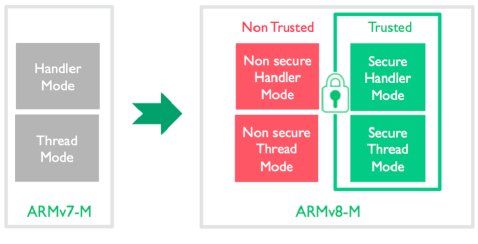
 |
Armv8-M Trust-Zone On Cortex-M33: Embedded Security
 Armv8-M Trust-Zone On Cortex-M33: Embedded Security Published 6/2025 Created by Wadix Technologies MP4 | Video: h264, 1280x720 | Audio: AAC, 44.1 KHz, 2 Ch Level: All | Genre: eLearning | Language: English | Duration: 78 Lectures ( 6h 21m ) | Size: 3 GB Learn ARMv8-M TrustZone on Cortex-M33: Secure embedded systems application with ARM CMSIS, Keil MDK, and LPC55S69 What you'll learn Embedded Security with ARMv8-M Cortex-M33 with Support of Trust-Zone Write Proper Secure Software Application using ARM Trust-Zone Understand in Depth the Trust-Zone Secure Transition at Software and Hardware Levels Learn ARMv8-M Instructions Set Introduced to Handle State Transition between Secure and Non-Secure States Requirements Some basic embedded systems knowledge Some basic ARM Cortex-M knowledge Description Learn how to secure modern embedded systems using ARMv8-M TrustZone on Cortex-M33 microcontrollers. This comprehensive course is designed for embedded developers, firmware engineers, and IoT professionals who want to implement trusted execution environments and achieve fine-grained security in ARM-based systems.Using the powerful LPC55S69 MCU and tools like Keil MDK and CMSIS, you'll gain both theoretical understanding and practical skills to build, test, and debug TrustZone-enabled applications in C.You'll also learn how to analyze and debug security-critical code at both the C and assembly level, ensuring you understand exactly how transitions and isolations are handled at the hardware level.What You Will Learn:Overview of the ARMv8-M architecture and its key security enhancementsHow TrustZone technology works on Cortex-M33 for embedded systemsDifferences between Secure, Non-Secure, and Non-Secure Callable (NSC) statesStep-by-step setup of SAU (Security Attribution Unit) and IDAUHow to partition memory based on security attributesDeep dive into new ARMv8-M instructions (SG, BLXNS, BXNS) for secure state switchingHandling Secure and Non-Secure interrupts and transitions safelyPractical C examples using CMSIS security macros and attributesBuilding projects with Makefiles, running on Keil MDK and LPC55S69 MCUDebugging embedded security labs at both C and assembly levelTools & Technologies:ARM Cortex-M33 (LPC55S69)ARMv8-M TrustZoneCMSIS (Cortex Microcontroller Software Interface Standard)Keil MDK (Arm Development Studio)Makefile-based C projectsWho Should Take This Course:Embedded systems developers looking to implement secure firmwareIoT engineers aiming to enforce hardware-level isolationFirmware developers working with ARM Cortex-M33 or TrustZoneAnyone interested in learning about ARMv8-M security featuresBy the end of this course, you'll be able to confidently design, build, debug, and maintain secure embedded applications using ARM TrustZone, ensuring system integrity and protection in real-world environments. Who this course is for Embedded Systems Programmers and Engineers aiming to learn Embedded Security with ARMv8-M Trust-Zone Embedded Systems Students in need to learm ARMv8-M Trust-Zone Concept Anyone who wants to enhance his Tech knowledge by learning ARM Trust-Zone on MCUs Devices Цитата:
|
| Часовой пояс GMT +3, время: 05:35. |
vBulletin® Version 3.6.8.
Copyright ©2000 - 2025, Jelsoft Enterprises Ltd.
Перевод: zCarot